Isekai is a common genre in manga and anime. Sending protagonists to another world makes them convenient audience proxies. Through the characters’ unfamiliarity, viewers have a relatable gateway into an enticing realm. But sometimes, maybe it’s a little too convenient. In most cases, everyone in that realm speaks the hero’s language. The commonality strains credulity, but some works go the extra mile.
Certain isekai tales actually incorporate language barriers into their storytelling. In fact, it’s part of how the protagonists learn about their new world. Including that challenge adds a welcome layer of authenticity to the fable. The ensuing story is more immersive as a result.
5 So I’m A Spider, So What?
The Arachnid Heroine Can’t Decipher the Dark God’s Dialect
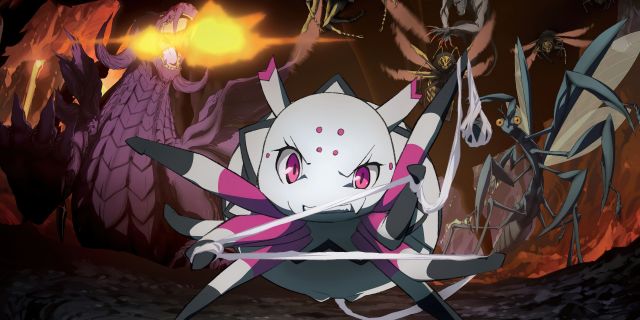
- Japanese Title: Kumo Desu ga, Nanika?
- Creator: Okina Baba
- Publisher: Fujimi Shobo
- Air Date: January 8, 2021, to July 3, 2021
- Studio: Millepensee
Some people draw the short straw even in death. In So I’m a Spider, So What?, two cosmic beings engage in an eternal battle. When one of their spells inadvertently kills a group of high school students, the kids are reincarnated in a fantasy world. Most of them assume positions of power or nobility, but one is not so lucky.
Shiraori (or “Kumoko”) reappears as a spider. Audiences might think that in itself kills her ability to communicate, but she can still talk. The problem is that the other inhabitants don’t speak her language.
One such individual is Gulie. He’s a god in the form of a man, which may explain his foreign sensibilities. Upon meeting Kumoko, he yaps at her in a fictional tongue. She responds by asking if he speaks Japanese. The exchange only frustrates the two. Somehow, simple speech is a bigger hurdle than the heroine’s monstrous looks.
4 The Keeper Wants To Build A Zoo In Ancient World, So He Tames Monsters
The Hero Works with Animals, But the Humans Present the Language Barrier
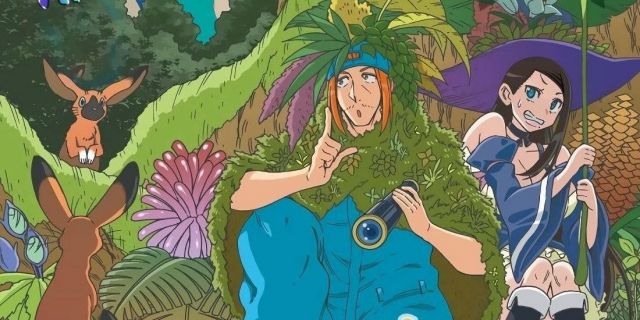
- Japanese Title: Shiikuin-San Wa Isekai De Doubutsuen Tsukuritainode Monsutaa Wo Tenazukeru
- Creator: Kawasaki Meidai
- Publisher: Kadokawa
Working with animals is always a challenge in communication, but The Keeper takes that concept to a new level. Ikuhara Kaeri is a zookeeper who’s fascinated by the possibility of undiscovered species. His dreams become a reality when he stumbles into a land populated by mythical beasts. The only familiar creatures are the humanoids, and that familiarity comes across in their speech. They can understand the protagonist perfectly, but there’s a catch.
To effectively communicate, Ikuhara must be talking. Reading and writing are a different story. Whenever the residents jot anything down, the hero can’t make it out. Granted, this obstacle isn’t as significant as a verbal barrier, but it’s still cumbersome. He’d probably have an easier time connecting with the fantastical animals.
3 Dog Days
These Animal People Speak Japanese, but Can’t Write It
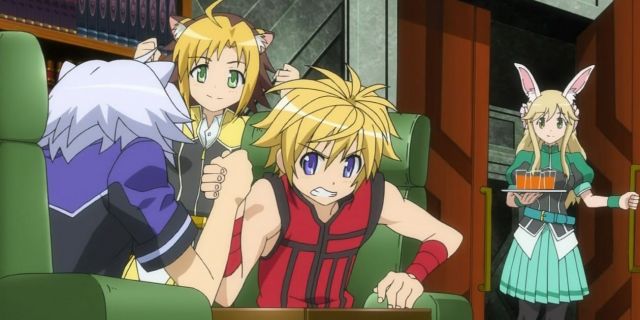
- Japanese Title: Doggu Deizu
- Creator: Masaki Tsuzuki
- Publisher: Kadokawa
- Air Date: April 2, 2011, to June 25, 2011
- Studio: Seven Arcs
Being half-Japanese and half-Cornish, Cinque Izumi should be familiar with language barriers. He encounters one such struggle in Dog Days, when a mundane day at school ends with him trapped in the land of Flonyard. Aside from their animal ears and tails, the inhabitants are practically indistinguishable from ordinary humans. That may explain how Cinque understands them. They speak perfect Japanese, but that’s not the issue. Their written language is unintelligible.
The problem is remarkably similar to the previous entry. Unsurprisingly, it leads to several embarrassing mishaps, such as Cinque going into the girls’ bathroom. At least he later learns this language, which is more than one can say for some isekai protagonists.
2 Gate
The Japanese Military Must Commune with Medieval Creatures to Prevent War
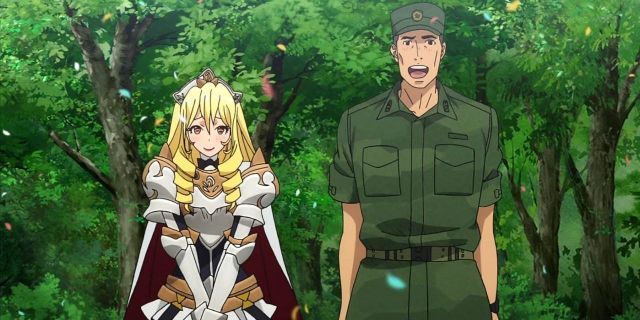
- Japanese Title: Gēto: Jietai Kano Chi nite, Kaku Tatakaeri
- Creator: Takumi Yanai
- Publisher: Arcadia
- Air Date: July 4, 2015 to March 26, 2016
- Studio: A-1 Pictures
Language and, by extension, language barriers, can have an international impact. That’s the case here. In Gate, the eponymous portal appears in Tokyo, and armored troops pour forth. The Japan Special-Defense Forces drive them back, and even gain a foothold on the other side. What they find is beyond their imagination. The gate houses a medieval fantasy realm populated by knights, dragons, elves, mages, and marauders. Needless to say, it causes a culture shock.
Language is part of that shock. Protagonist Yoji Itama is a reserve officer who proceeds into the portal. His goal is to establish peaceful relations between the two worlds, but neither side understands the other. That barrier becomes dangerous when each faction engages in political scheming to exploit the situation.
Thankfully, Yoji and his comrades take steps to mitigate the volatile atmosphere. Not only do they offer sanctuary to the refugees of a destroyed village, but they start specialized schools to teach Japanese to their new neighbors. These elements paint a realistic portrayal of such a conflict.
1 Drifters
History’s Greatest Figures Spoke a Variety of Languages
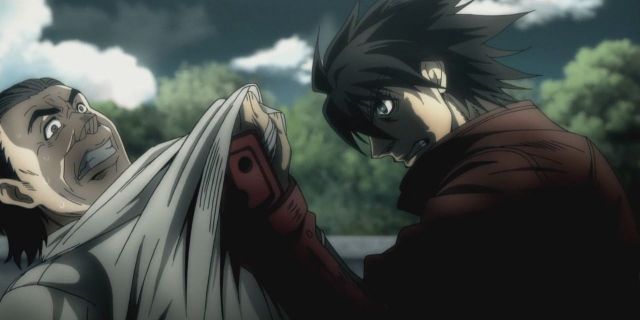
- Japanese Title: Dorifutāzu
- Creator: Kouta Hirano
- Publisher: Shōnen Gahosha
- Air Date: October 7, 2016 to November 30, 2018
- Studio: Hoods Drifters Studio
Most isekai tales involve modern protagonists, but Drifters departs from that trend. It revolves around Shimazu Toyohisa, a warrior in feudal Japan. After sustaining a fatal wound, he finds himself in a corridor of doors. Entering one sends him to another war, this time in a fantasy setting. It has all the usual trappings of medieval folklore, with no shortage of mythical monsters to mingle with. However, that’s easier said than done. The elves and other residents speak Orte, a Latin-esque language which Toyohisa doesn’t understand. That’s not the only linguistic obstacle.
The war also draws other “Drifters,” people from various places and periods in Earth’s history. That variety obviously creates a few issues. After all, a soldier from Ancient Rome doesn’t have the same language or inflections as a Japanese fighter pilot from WWII. Despite the difficulty, these guys must overcome their differences. The whole point of Drifters is to fight together to preserve their new world. Teamwork falls apart if the team can’t communicate.
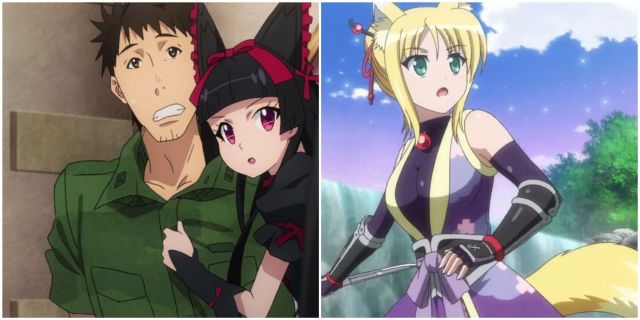










Leave a Reply